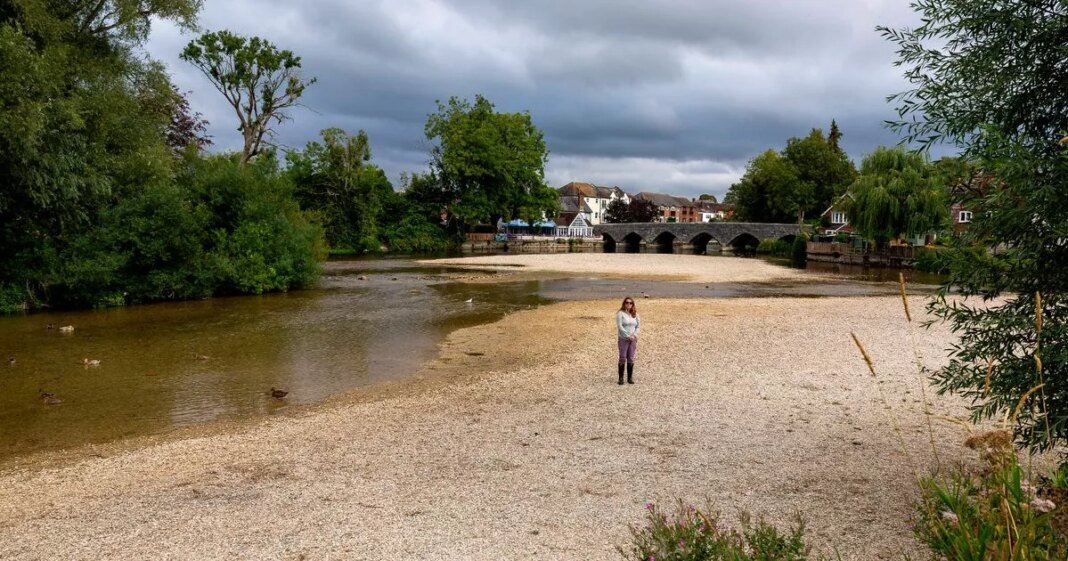England is facing a severe water crisis with reservoirs hitting all-time lows and rivers running exceptionally dry. The prolonged drought and scorching heatwaves have left farmers in the driest regions bracing for a meager harvest. The dire situation is also taking a toll on wildlife, with dehydrated hedgehogs and owls receiving care in rescue centers, and beavers struggling as their freshwater habitats dry up.
The River Avon in Fordingbridge, Hamps, currently at its lowest levels since 1976, paints a stark picture of the parched conditions across the country. In Southampton Common, the drying up of the lake has left fish struggling to survive in the diminishing water supply.
More than half of the nation’s reservoirs have seen a significant drop in water levels, with Ardingly reservoir experiencing a 20% decrease, prompting drought alerts in multiple areas. The scorching summer weather has not only impacted food prices but has also led to widespread water restrictions, highlighting the urgent need for better preparedness.
Experts warn that the prevailing extreme weather patterns, fueled by climate change, could become more frequent in the future. Forecasts suggest that by 2055, England’s water supply could fall short by 5 billion liters daily without immediate action.
Dr. Janina Gray from WildFish emphasizes the lack of preparedness for droughts in England, blaming the failure of water companies and governments to plan effectively. The low water levels in rivers pose a grave threat to wild fish, as reduced oxygen levels and concentrated pollutants could trigger mass fish deaths and endanger species like the iconic salmon of the Itchen.
The dry spell has also impacted wildlife rescue efforts, with hedgehogs suffering from dehydration and parasitic infections. Tragically, a beaver released into the wild succumbed to the consequences of the drought, venturing into saltwater in search of a new habitat.
The agricultural sector is reeling from the water shortage, with millions of households under hosepipe bans and farmers struggling to sustain their livestock and crops. The unpredictable climate, aggravated by climate change, has led to significant drops in crop yields, raising concerns about food security.
Despite the challenges faced by farmers, consumers may not immediately feel the impact on supermarket shelves, as retailers may source produce from abroad to meet demand. The ongoing climate crisis and habitat loss are compounding the challenges for wildlife, with species like barn owls and badgers facing heightened risks due to the drought.
To support wildlife during this critical period, experts recommend maintaining insect-friendly garden spaces, providing clean water sources, and offering suitable food options for various animal species. As England grapples with the repercussions of the current drought, proactive measures are essential to safeguard both the environment and the food supply chain.



